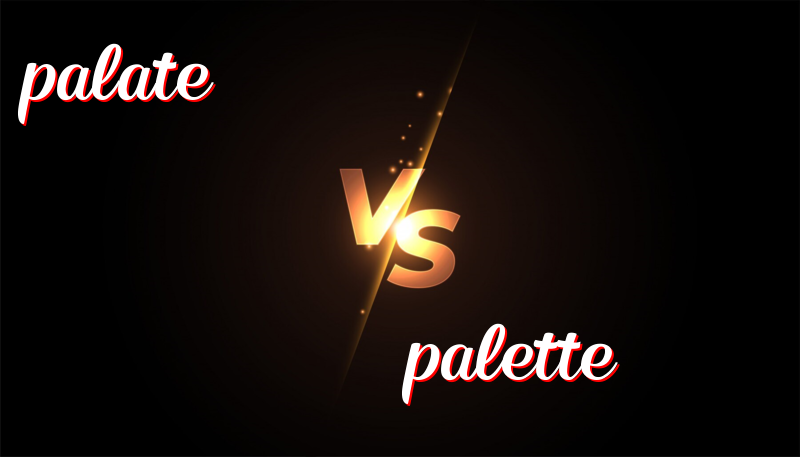Tastes and Tints: The Tale of Palate and Palette
The Difference Between Palate and Palette
History:
Palate comes from Latin “palatum,” which means “roof of the mouth.” It has been used to refer to one’s sense of taste since the 1500s. Palette also has Latin roots from “pala,” which means “blade” or “shovel,” and has been used to refer to an artist’s paint board since the 1600s.
How to Use Them:
– Palate refers to one’s sense of taste or the roof of the mouth.
– Palette is an artist’s paint board or range of colors.
Trick to Remember the Difference:
Think of a “palate” as your plate; it helps you taste food. For “palette,” remember it’s like an artist’s “pallet” of colors.
Examples of Palate:
1. She has a sophisticated palate and can distinguish between different flavors.
2. The spicy curry overwhelmed his delicate palate.
3. He cleansed his palate with a sip of water before tasting the wine.
4. The chef’s creations cater to a variety of palates.
5. Her palate prefers sweet treats over salty snacks.
Examples of Palette:
1. The artist mixed blue and yellow on her palette to create green.
2. His palette of colors included shades of red, orange, and purple.
3. She selected a wooden palette for oil painting.
4. The painter used a large palette to mix her colors.
5. His palette of eye shadows featured vibrant hues for the summer.
Summary of Usage:
– Palate relates to taste or the roof of the mouth.
– Palette is about colors on an artist’s board.
I hope this helps you understand the difference between “palate” and “palette”!

Leave a Reply
You must be logged in to post a comment.